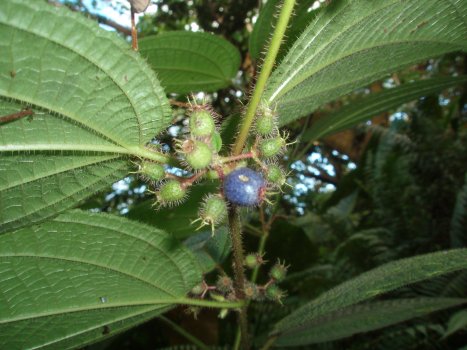
Clidemia hirta
18 October 2007
The field experience was based on the following handouts:
Vegetative Morph Modification
Leaf Parts & Arrangement
Leaf Shapes
An unidentified member of melastomaceae was photographed during this walk. This would prove to be Clidemia hirta, a very aggressive invasive species.

Clidemia hirta
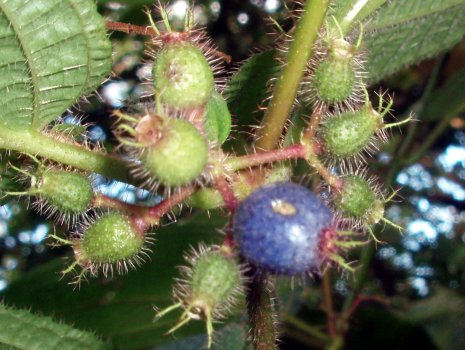
Fruit detail
The above plant is similar to pisetikmei (Melastoma malabathricum var. marianum) is an important native medicinal plant on Pohnpei. In an earlier class, Lollaine explained a local use of pisetikmei. Pisetikmei is a native plant of Pohnpei.
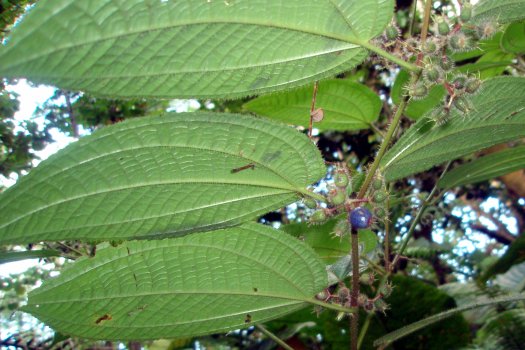
Leaves
Identification of this plant would occur in March 2009 by a team from the National Tropical Botanic Garden.
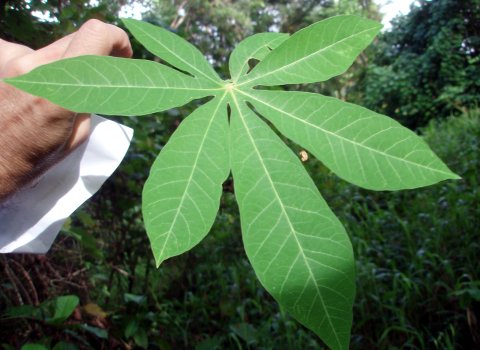
Manihot esculenta leaf: palmate
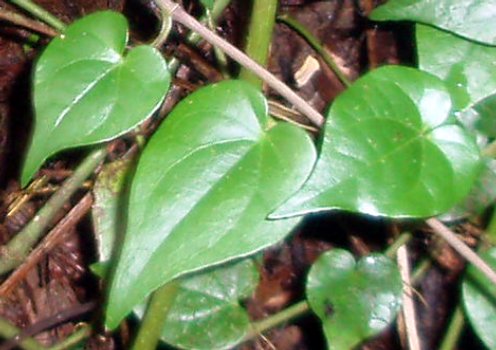
Piper ponapense leaves: cordate
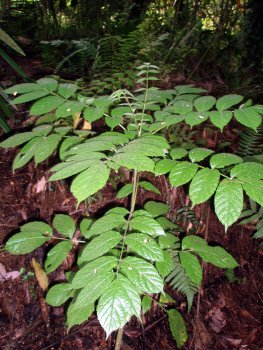
Spathodea campanulata: opposite leaf arrangement
Spathodea campanulata is a dangerous invasive. The small trees invading the forest across the road from the college are likely due to the large tree by the cultural huts on campus.
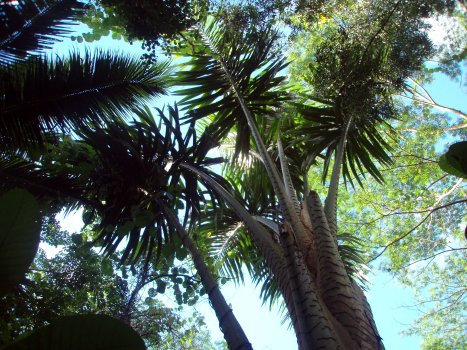
Metroxylon amicarum, oahs: one of the larger leaves on the planet with massive petioles.
Amicarum derives from "amicarium" is Latin and means "of friends." Starting in spring 2007, the ethnobotany vegetative morphology hike ends at this emblematic indigenous tree. The hike spent a few years "wandering" around in search of a good route. The massive leaves of the oahs and its indigenous status provide a strong ending to this particular hike.
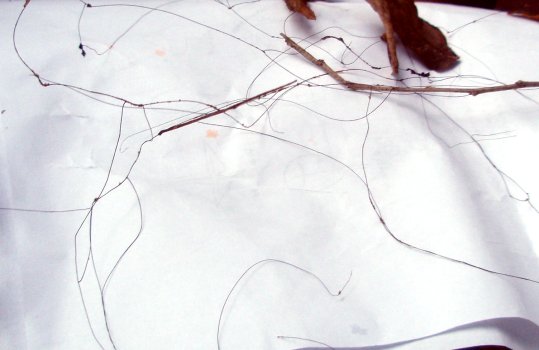
Yapese beard "plant": rob
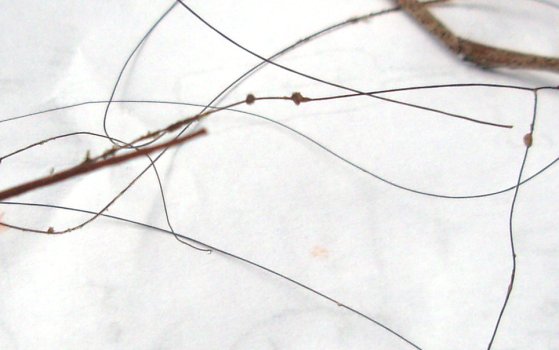
Yapese beard "plant": rob

Stallone
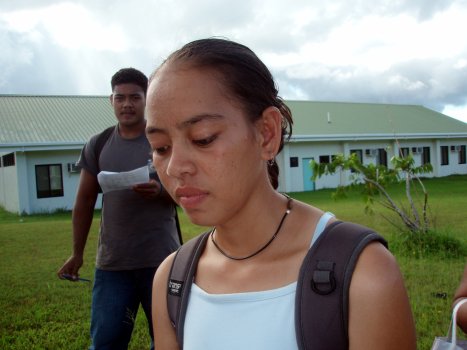
Elsieleen
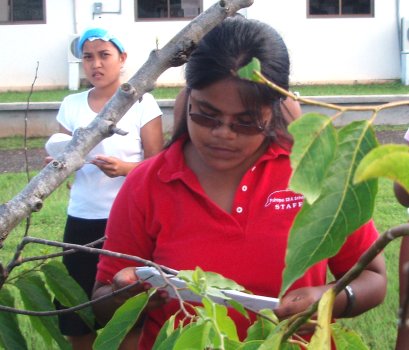
Looking for lanceolate

Lollaine studies the handout
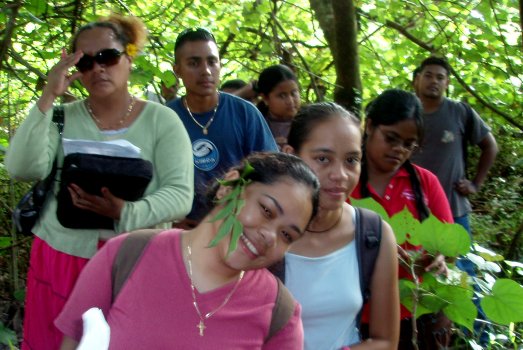
Under a green canopy, Divine strikes a pose
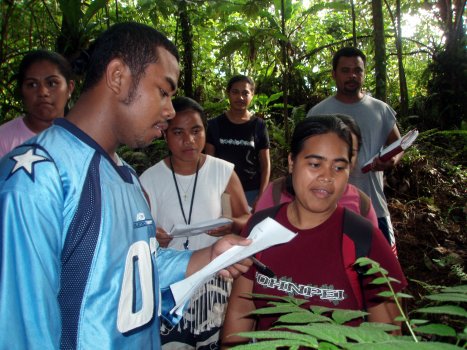
Examining Spathodea campanulata